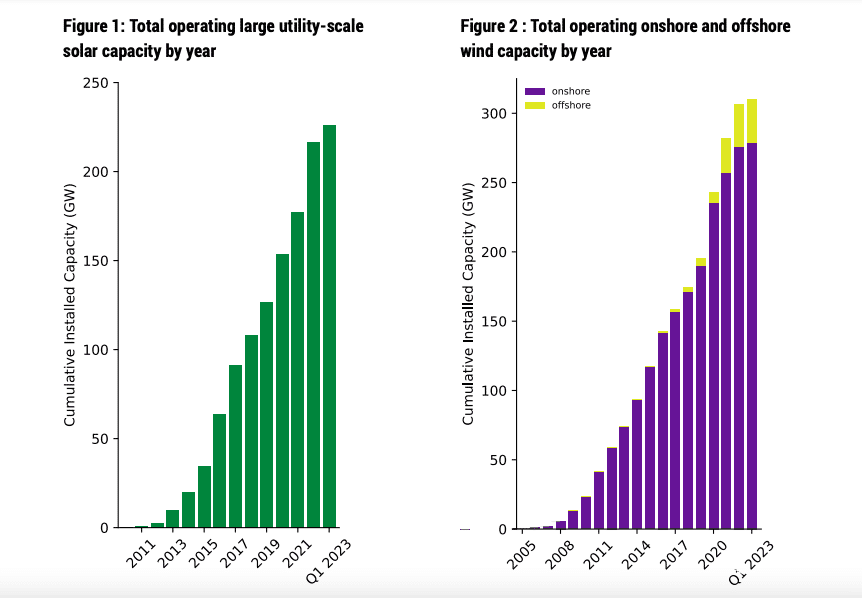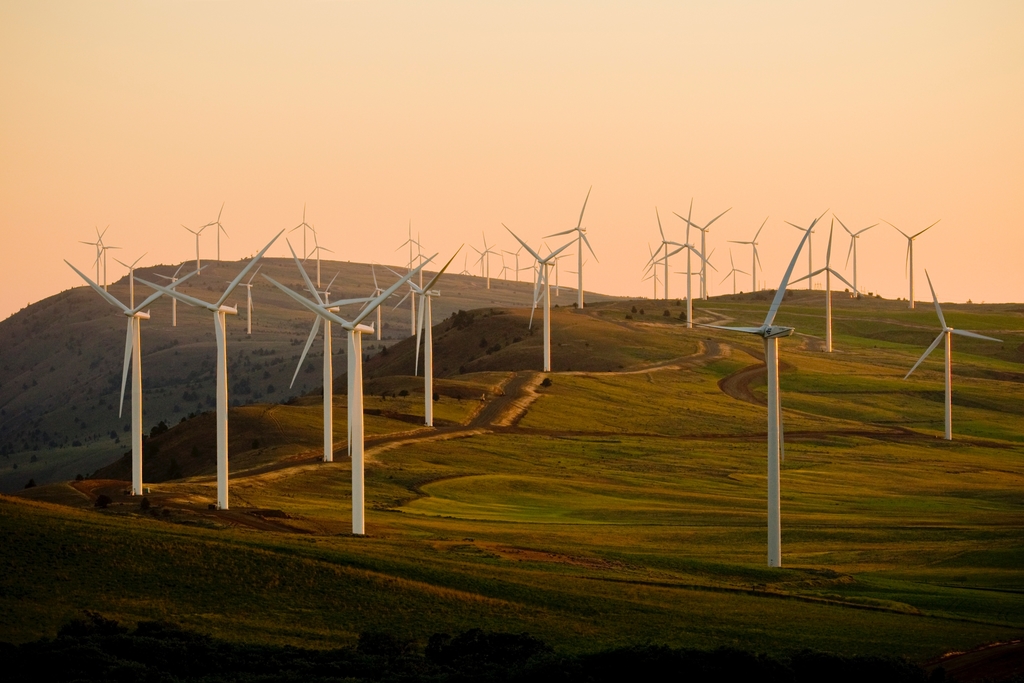Record growth in clean energy technologies in recent years – including solar panels and electric vehicles – indicates that there is still a chance to limit global warming to 1.5C, the International Energy Agency (IEA) said on Tuesday.
—
Despite unprecedented progress in clean energy development in recent years, substantial additional efforts are still required by 2030 to reach net zero emissions by mid-century, a new report suggested.
In its latest update of the Net Zero Roadmap, the International Energy Agency (IEA) said a tripling of global renewable capacity, a doubling of energy-efficient infrastructure, a significant boost in heat pump sales, and further widespread adoption of electric vehicles (EVs) are still required.
The Agency also said that the costs of cutting methane emissions from the energy sector by 75% by 2030, a move seen as “essential”, would be equivalent to just 2% of the net income received by the oil and gas industries last year, making it “one of the least cost opportunities to limit global warming in the near term.”
Despite praising the extraordinary growth in some clean energy technologies, the IEA also criticises increased investments in fossil fuels and “stubbornly high” emissions, saying there is no room for this in a net zero scenario.
A recent analysis found that fossil fuel subsidies reached a total of US$7 trillion in 2022, the highest value ever recorded, as countries around the world rushed to protect consumers from rising energy prices sparked by the war in Ukraine. The total amount invested in the dirty oil, gas, and coal industries amounted to more than what governments spent on education and about two-thirds of what they spent on healthcare. Nearly half of them came from the East Asia and Pacific region, with China spending the most on fuels, followed by the US, Russia, the European Union, and India.
Nevertheless, the report also suggests that the rollout of key clean energy technologies has happened at such a speed that planet-warming fossil fuels will all peak this decade even without any new climate policies. The agency had previously suggested that fossil fuel demand would peak by 2025.
In June, the IEA estimated that investments in clean technologies will reach $1.7 trillion this year. In comparison, $1 trillion will go into fossil fuel projects. The “unprecedented momentum” in renewable energy manufacturing and global spending on clean energy was triggered by several factors, including a strong rebound in economic growth following the Covid-19 pandemic, effective climate policies such as the US Inflation Reduction Act, and rising fossil fuel prices triggered by the war in Ukraine.
The Case for Reversing Global Warming Has Never Been Stronger
This summer was the hottest the planet has ever seen and “by a large margin”. June, July, and August were the hottest on record, with the average global temperature between the three month at 16.77C (62.18F), 0.66C above the 1990-2020 average. July was also the hottest month ever recorded. Throughout that month, more than 6.5 billion people – approximately 81% of the global population – faced climate change-attributed heat, a recent analysis found.
In Europe – the world’s fastest-warming continent, warming twice as fast as any other continent – temperatures in the continent were 0.83C above average at around 19.63C (67.33F), according to the EU’s Climate Change Copernicus Service.
Atmospheric carbon dioxide (CO2) levels are now more than double what they were before the onset of the Industrial Revolution in the 19th century, according to National Oceanic and Atmospheric Administration’s (NOAA) measurements. Rising CO2 levels have devastating consequences on the environment, from amplifying extreme weather events including heatwaves, floods, droughts, and wildfires, to heating up oceans, resulting in rising sea levels, ocean acidification, and disruption of marine habitats and ecosystems.
All this is proof that the frequency and severity of climate change impacts are on the rise, and scientific warnings about the perils of our current trajectory have reached unprecedented levels of urgency.
Nevertheless, positive developments in recent years are proof that we have all the tools needed to accelerate the green transition and reverse the course. However, the window is closing, and unless we speed up clean energy growth and take key actions required to bend the emission curve downwards by the end of the decade, it will be too late, the IEA report suggested.
“The path to limiting global warming to 1.5C has narrowed since 2021,” the Agency’s head Faith Birol said yesterday after the report’s release, adding that “despite stubbornly high emissions, the staggering growth of clean energy technologies is keeping it open.”
Renewable energy deployment has indeed skyrocketed in recent years, with China leading the way. According to a recent report by the non-profit Global Energy Monitor (GEM), the rapid renewable energy deployment across China over the past 15 years has brought the country to the top of the global wind and solar leaderboard. Each of the two energy sources currently accounts for more than one-third of the world’s cumulative installed capacity, the report said.
Despite being the world’s largest energy consumer and greenhouse gas producer, China has emerged as a global leader in renewable energy in recent years. According to GEM, solar capacity in the country – which is mostly concentrated in the northern and northwest provinces of Shanxi, Xinjiang, and Hebei – currently stands at 228 GW, more than the rest of the world combined. Wind expansion has also accelerated recently, doubling from 2017 to 310 GW. Offshore wind alone exceeds Europe’s operating capacity and accounts for about 10% of the country’s total wind capacity.
This trend puts the country on track to double its wind and solar capacity by 2025 and reach its clean energy target five years ahead of schedule, the GEM report suggested.

China is currently hosting nearly half of the world’s total operating wind and solar capacity. Image: Global Energy Monitor.
While China’s progress on renewables is unmatched, clean energy is rapidly expanding around the world. According to the International Energy Agency (IEA), the power sector is set for a “tipping point” on its carbon dioxide emissions, as renewables and other cleaner sources – including nuclear energy – are on track to cover most of the new global electricity demand by 2025.
“Record growth in solar and electric vehicles are now in line with a pathway towards net-zero emissions by mid-century,” said Birol.
Indeed, the IEA analysis found that electric car sales grew 240% and stationary battery installations by 200% since 2020. Similarly, solar PV capacity addition increased by almost 50%.
The Agency also highlights the necessity of an “equitable” green transition, requiring developed economies to reach net zero sooner than developing ones but also to provide the necessary funding to support the transition in developing economies.
“The sharpest jump in clean energy investment is needed in emerging market and developing economies other than China, where it surges sevenfold by the early 2030s in the NZE Scenario,” the Agency said.
You might also like: China’s Renewable Energy Empire in Africa: Lifeline or Debt Trap?


















